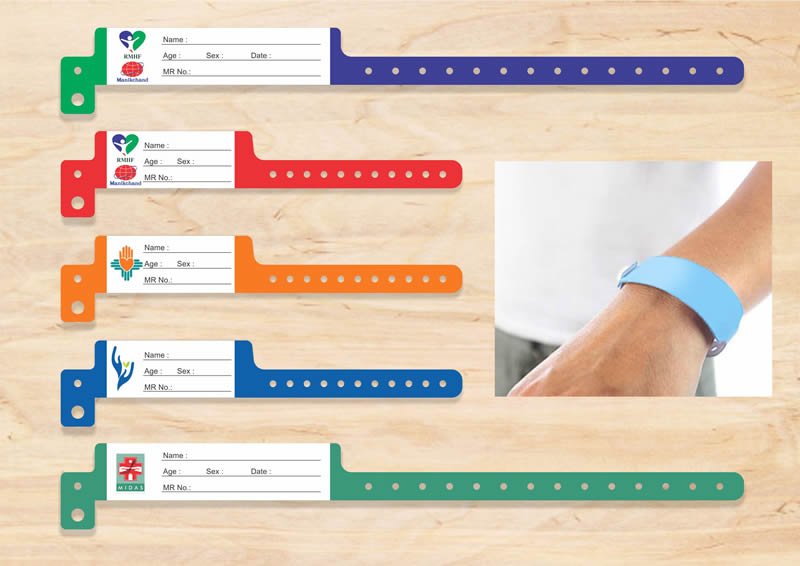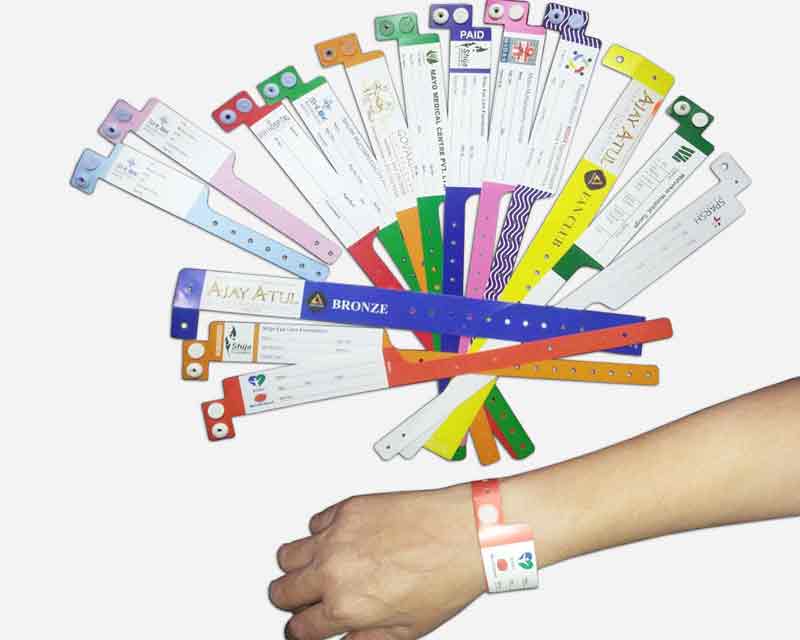Why Investing in a High-Quality Patient Identification Band is Crucial for Medical Institutions
Why Investing in a High-Quality Patient Identification Band is Crucial for Medical Institutions
Blog Article
Checking Out the Numerous Sorts Of Patient Identification Band Used in Clinical Facilities
In the complex globe of medical care, the crucial role of Patient Identification bands usually goes undetected. These bands, differing from easy paper wristbands to innovative RFID bands, form the backbone of Patient security procedures, ensuring accuracy in Patient Identification. The huge variety of these bands, each with its one-of-a-kind advantages and restrictions, is typically forgotten. As we browse with this subject, one may acquire insight right into the refined intricacies and crucial significance of such bands in medical facilities.
Comprehending the Value of Patient Identification Bands
While they may appear like simple devices, Patient Identification bands play an essential duty in clinical facilities. These bands function as a critical device for verifying Patient identification, avoiding clinical mistakes related to misidentification. The bands normally display essential details such as the Patient's name, age, blood group, and any kind of recognized allergies. They enable health care experts to rapidly access this vital information, thereby assisting in exact and punctual medical treatment. Patient Identification bands additionally aid in improving management jobs, making certain precise record-keeping and invoicing. Despite their simpleness, these bands symbolize the principle of Patient security, a foundation of high quality healthcare. Without them, the risk of clinical mistakes, and as a result, Patient damage, may significantly increase.
Traditional Paper Wristbands: Their Use and Limitations
Typical paper wristbands have actually been a staple in Patient Identification across various medical centers. While their usage is extensive, they nurture specific constraints that may impact their efficiency in Patient monitoring. This area will concentrate on the range of their application and the fundamental downsides connected with their use.
Paper Wristbands: Use Extent
In the world of Patient Identification, paper wristbands have long held an essential function. These bands are normally utilized in outpatient setups, where the Patient's remain is short-term. The wristbands contain vital info such as the Patient's name, day of birth, and an one-of-a-kind Identification number. This straightforward, yet efficient system, enables doctor to promptly and accurately identify people, guaranteeing the correct therapy is administered. Paper wristbands are likewise made use of in emergency situation situations, where rapid Identification is critical. Their use prolongs to events like blood contribution drives and mass vaccination programs, further stressing their convenience. In spite of improvements in innovation, the humble paper wristband stays a affordable and reliable service for Patient Identification in numerous healthcare scenarios.
Limitations of Paper Wristbands
In spite of their extensive use, paper wristbands are not without their downsides. Their physical sturdiness is one of the substantial constraints. Exposure to water, sweat, or misuse can render them unreadable and even create them to disintegrate. Furthermore, paper wristbands usually do not have the technological capacities of more modern-day alternatives, such as barcoding or RFID chips, restricting their functionality to just showing created info. The inability to upgrade or modify the data on the wristband is another shortcoming. If the info is handwritten, legibility can be compromised, leading to potential misidentification. Finally, paper wristbands can cause pain or skin irritation to some clients, particularly when used for prolonged durations.
Barcoded Wristbands: Advancements in Patient Identification
While Patient Identification has long been an essential facet of medical care, the development of barcoded wristbands represents a substantial jump forward. These bands utilize the simplicity of barcoding innovation, permitting for Patient info to be quickly scanned and accessed. They improve the speed and accuracy of Patient Identification, reducing the risk of medical mistakes associated to misidentification.
Radio Frequency Identification (RFID) Bands: a Step In The Direction Of Futuristic Medical Care
The evolution of Patient Identification look at this website bands has brought about the development of Superhigh frequency Identification (RFID) Bands (patient identification band). These ingenious gadgets existing vital benefits for health care facilities, providing a more effective and technically advanced methods of Patient Identification. The implementation of RFID in health care is a substantial step towards a more futuristic technique to Patient monitoring and safety
Understanding RFID Bands

RFID Bands: Secret Benefits
Welcoming a future where innovation and medical care combine, superhigh frequency Identification bands supply a number of vital advantages. Mostly, these bands enhance Patient safety and security by giving exact, rapid Identification, thus lowering medical errors. RFID bands can save a vast amount of Patient information, consisting of medical history and allergies, allowing personalized treatment. They likewise enhance administrative jobs, as the automated data access changes hands-on processes, boosting performance and minimizing documents. RFID bands supply real-time tracking of people, important in risky atmospheres such as surgery or intensive care. These bands are resistant and long lasting to environmental elements, making sure consistent capability. Overall, RFID bands stand for a substantial improvement in Patient Identification modern technology, benefiting both individuals and health care companies.
Implementing RFID in Medical Care
These bands supply a smooth means to track and recognize people, ensuring their safety and security and enhancing efficiency in treatment procedures. RFID bands minimize clinical errors by offering accurate Patient Identification, which is vital in protecting against misdiagnosis or incorrect medicine administration. Thus, the implementation of RFID bands is a considerable action in the direction of enhancing Patient security and healthcare shipment.

Color-Coded Wristbands: Helping in Quick and Accurate Medical Diagnosis
In the dynamic setting of a medical facility, color-coded wristbands have emerged as vital devices for swift and exact Identification of a patient's clinical problem. These wristbands, used by clients, bring details colors that correspond to different medical problems or statuses. For example, red can indicate allergic reaction dangers, while yellow might symbolize an autumn danger. This system is made to provide prompt visual hints to healthcare service providers, improving Patient safety and security and care high quality. In emergency situation situations, the usage of these wristbands enables fast decision-making. Nonetheless, the effectiveness of color-coded wristbands depends upon the harmony of shade analysis throughout healthcare establishments, requiring usual standards for consistent application.
Approaches for Efficient Application and Management of Patient ID Bands
Accomplishing optimal use of Patient Identification bands necessitates a well-structured technique for their application and monitoring. The very first step involves training all health and wellness employees on the relevance of properly using and reading these bands. Health centers must systematize the usage of ID bands throughout all departments, ensuring uniformity and decreasing disparities. Regular audits needs to be performed to verify adherence to plans and to correct any type of inconsistencies. Patient education is additionally crucial; clients should recognize the objective of the bands and the need for their constant wear. patient identification band. Last but not least, it's important to have a back-up strategy in position, such as barcode scanning or biometrics, to make sure that Patient Identification is never endangered.
Final thought
Patient Identification bands are important in clinical centers to ensure safety and security and accuracy. Effective implementation and monitoring of these bands can Your Domain Name dramatically reduce clinical mistakes, increase efficiency, and enhance total Patient care.
These bands, differing from simple paper wristbands to advanced RFID bands, create the backbone of Patient security procedures, ensuring precision in Patient Identification.The development of Patient Identification bands has brought regarding the appearance of Radio Frequency Identification (RFID) Bands. In general, RFID bands represent a significant improvement in Patient Identification modern technology, profiting both individuals and medical care carriers.
RFID bands reduce medical mistakes by supplying precise Patient Identification, which is essential in protecting against misdiagnosis or wrong medication administration. Patient education and learning is likewise vital; patients should understand the objective of the bands and the need for their constant wear.
Report this page